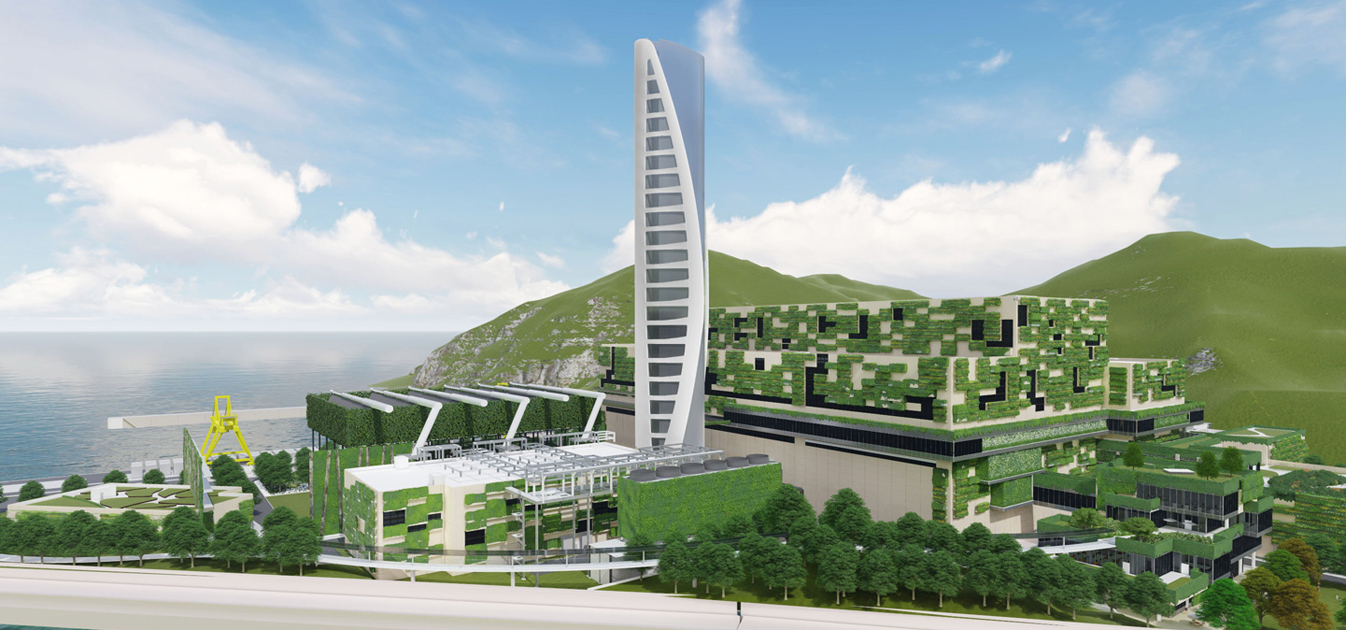Our Targets
- Halve Scope 1 and 2 carbon emissions by 2030, compared to 2020 levels, and achieve net zero by 2050.
- Report on all categories of Scope 3 emissions relevant to Keppel.
- Aim for 50% of Keppel’s electricity use to be from renewable energy sources by 2025, with a view to reach 100% by 2030.
- Achieve 10% reduction in waste intensity for Real Estate Division’s retail assets by 2030 from 2023 baseline.
- Achieve 5% reduction in water intensity for Infrastructure and Real Estate Divisions by 2030 from 2023 baseline.
- Grow portfolio of renewable energy assets to 7 GW by 2030.
- Continue to quantify avoided emissions arising from Keppel’s solutions.
- Continue to assess the financial impact of climate-related physical and transition risks and opportunities on the Company.
Keppel is committed to both running our business sustainably, and making sustainability our business through investing in and creating solutions for a sustainable future. This involves focusing our portfolio on sustainability-related solutions, building resilience against climate change risks, and seizing climate-related opportunities which help our customers and communities get to net zero. We are also committed to minimising our environmental impact by reducing greenhouse gas emissions, energy consumption, water consumption and waste generation, as well as preventing pollution and preserving biodiversity in our operations.
Keppel supports the Taskforce on Climate-related Financial Disclosures (TCFD), and has incorporated its recommendations in our sustainability reporting since 2020 to better articulate climate-related risks and opportunities that have a financial impact on our business.
Since 2020, Keppel has implemented a shadow carbon price in the evaluation of new investments, to help us factor in the possible impact of future carbon prices and avoid potential stranded assets, while channelling our investments towards solutions that contribute to sustainable development.
We disclose our performance in mitigating our environmental impact in our annual sustainability reports.
Emissions Reduction Targets
Keppel’s carbon reduction strategy is overseen by the Board Sustainability and Safety Committee and driven by the Management Executive Committee, which is chaired by the CEO of Keppel Ltd.
Keppel aims to halve its Scope 1 and 2 carbon emissions by 2030 compared to 2020 levels, and reduce its Scope 1 and 2 emissions by 100% to achieve net zero by 2050. We plan to achieve this through refocusing Keppel’s portfolio on sustainability solutions, pivoting away from more carbon intensive businesses, implementing energy efficiency measures, increasing the use of renewable energy, including through purchasing Renewable Energy Certificates, as well as purchasing carbon credits to offset any residual unavoidable emissions, where necessary.
The target is in line with the Paris Agreement’s goal to limit global temperature increase to 1.5°C compared to pre-industrial levels. Keppel tracks and reports on all relevant categories of Scope 3 emissions. We are also working with our supply chain and portfolio of investments to improve energy efficiency and reduce emissions wherever possible.
Keppel’s operating divisions have set Scope 3 reduction targets wherever possible, in line with their respective sectoral contexts and unique capabilities.
Improving Energy Efficiency
Keppel’s energy efficiency initiatives include the optimisation of operations and processes; technological improvements, including the adoption of more sustainable building designs and materials; and the use of energy-efficient equipment and devices.
Managing Water & Waste
We continue to strengthen our water conservation efforts through initiatives like promoting water-saving practices, adopting water-efficient technologies and equipment as well as implementing process improvements.
All effluents are monitored, treated and discharged in accordance with relevant standards and limits in the countries of operation. Any non-compliance is immediately addressed and rectified. Appropriate earth control measures are utilised to ensure that discharged water contains a lower amount of total suspended solids than the legal allowable limits.
We strive to minimise waste generation, increase opportunities for reusing and recycling, as well as treat and dispose waste responsibly where other options are not practicable. Hazardous waste generated is handled, stored and disposed in a manner that adheres to best practices and meets local regulatory requirements.
